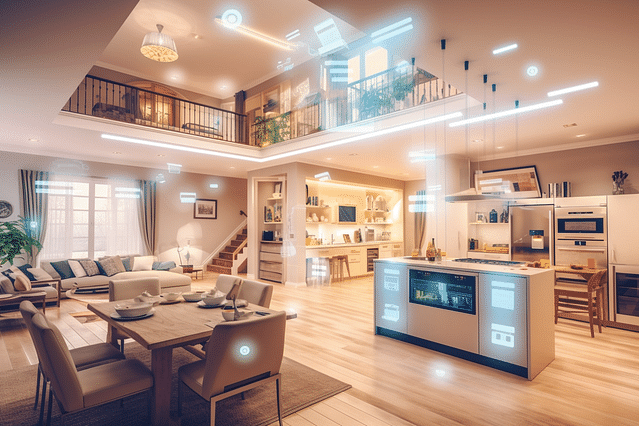
Home Assistant Humidity Automation: Everything You Need to Know
If you're considering adding a home automation system to your home, you might be wondering about the benefits of automating your home's humidity level. Not only can it improve your indoor air quality, but it can also help prevent mold growth and prevent damage to your home and possessions. Home Assistant is an excellent tool for this purpose: it's a free and open source home automation platform that allows you to control and automate all aspects of your home, including the humidity level.
In this article, we'll explore everything you need to know about Home Assistant humidity automation, including the benefits of humidity automation and the best devices to use for optimal results.
Why Should You Automate Your Home's Humidity?
Humidity is the amount of moisture in the air, and it can have a significant impact on your home and your health. High humidity levels can lead to mold growth, which can cause respiratory issues and other health problems. They can also damage your home's walls, floors, and possessions. Low humidity levels, on the other hand, can cause dry skin, respiratory problems, and even damage to your furniture and wood floors.
By automating your home's humidity level, you can ensure that it stays within a healthy range. The ideal humidity level is between 30% and 50% relative humidity. With Home Assistant humidity automation, you can set your desired range, and your system will automatically adjust your home's humidity accordingly.
How Does Home Assistant Humidity Automation Work?
Home Assistant humidity automation works by using sensors to monitor the humidity level in your home and adjust your HVAC system or other humidity control devices accordingly. You can use any of the following sensors for this purpose:
- Temperature and humidity sensors: These sensors measure the temperature and relative humidity of the air in your home.
- Smart thermostats: Smart thermostats like the Nest can also monitor and control your home's humidity level in addition to controlling your HVAC system.
- Smart humidifiers and dehumidifiers: You can also use smart humidifiers and dehumidifiers that are compatible with Home Assistant to automate your home's humidity level.
Once you've installed your sensors and devices, you can use Home Assistant's automation features to control your home's humidity level. You can set up triggers and actions to adjust your HVAC system or humidifiers and dehumidifiers automatically based on your desired humidity range.
The Best Devices to Use for Home Assistant Humidity Automation
Here are some of the best devices to use for Home Assistant humidity automation:
- Nest Learning Thermostat: The Nest Learning Thermostat is one of the most popular smart thermostats on the market, and it's fully compatible with Home Assistant. It can monitor and control your home's humidity level, in addition to adjusting your HVAC system based on your temperature preferences.
- Honeywell Lyric T6 Pro Wi-Fi Thermostat: The Honeywell Lyric T6 Pro Wi-Fi Thermostat is another popular smart thermostat that's fully compatible with Home Assistant. It has advanced humidity control features that allow you to set your desired humidity range and adjust your HVAC system accordingly.
- Honeywell TrueEASE Humidifier: If you need to add humidity to your home, the Honeywell TrueEASE Humidifier is a great choice. It's compatible with Home Assistant and has an automatic humidity control feature that uses advanced sensors to ensure that your home stays within a healthy humidity range.
- Honeywell TrueDRY Dehumidifier: If you need to remove excess moisture from your home, the Honeywell TrueDRY Dehumidifier is a great option. It's fully compatible with Home Assistant and has an automatic humidity control feature that adjusts your dehumidifier based on your desired humidity range.
Conclusion
Home Assistant humidity automation is an excellent way to ensure that your home stays within a healthy humidity range. By using temperature and humidity sensors, smart thermostats, and smart humidifiers and dehumidifiers, you can automate your home's humidity level and enjoy all the benefits that come with it. Whether you're looking to improve your indoor air quality, prevent mold growth, or protect your home and possessions, Home Assistant humidity automation is a must-have for any smart home.
Posted on: Mar 7, 2023 Last updated at: May 4, 2023